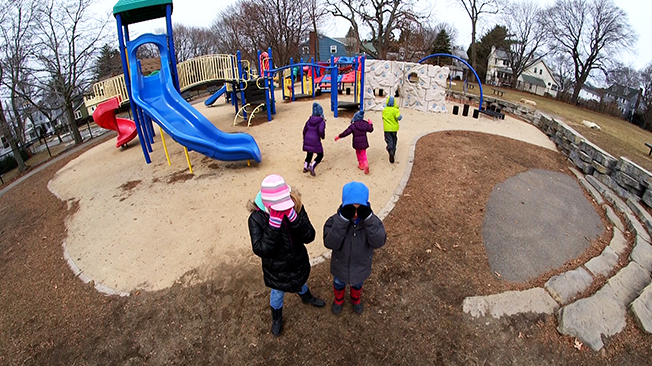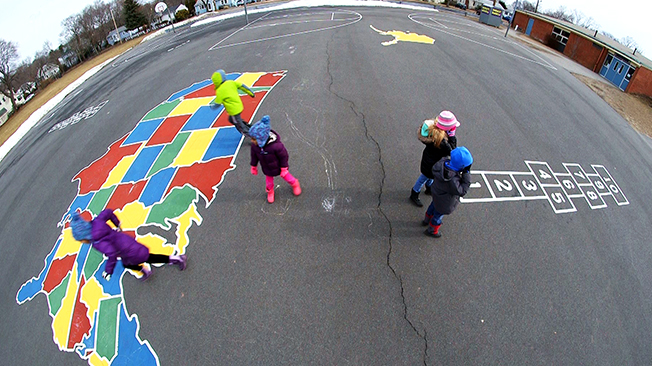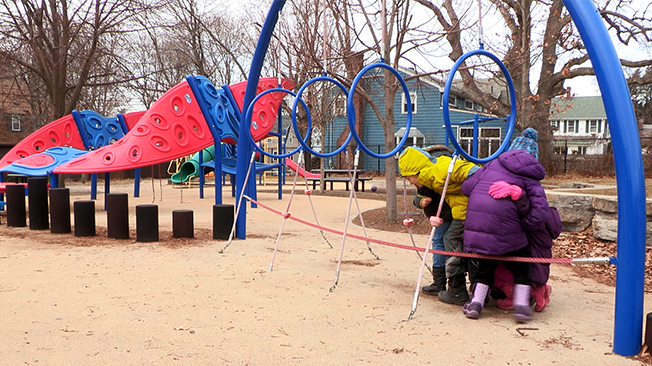Catch Me If You Can

What Is This Activity?
In this hide-and-seek activity, experience how animals use the features of their habitats, such as trees, bushes, or rocks, to hide from predators or to help them sneak up on prey.
Introduction
-
-
00:00
What Are Kids Learning?
- Predators are animals that hunt and eat other animals
- Prey are animals that predators hunt and eat.
- Prey have strategies to make it hard for predators to catch them. Blending into the background and living in places that are hard for predators to reach are two strategies.
- Predators also have strategies that help them catch their prey, such as blending into the background and hunting as a group.
Activity 60 minutes

Part A Hide and Seek (20 minutes)
Head outdoors and tell your child that you are going to take on the roles of predators and prey in different places around your neighborhood.
First, play a few games of hide-and-seek. If you prefer, you may play tag instead.
- Find an open space, such as a sports field or basketball court.
- Have your child choose between being the "prey" and the "predator." TIP: Your child will probably point out that there is no place to hide in this open space. That's exactly the point! If your child points this out, simply say, "Let's see what happens."
- Play hide-and-seek!
- When you've finished playing, ask: Was it easier to be a predator or prey? Why?

Part B Come Out, Come Out, Wherever You Are!
- Head to a different site, like a park with obstacles such as trees, bushes, and benches, or a playground full of swings, slides, and climbing structures.
- Repeat the hide-and-seek or tag activity. Take turns so that you each get to play the role of predator and prey. Was it easier to be predator or prey here? Why?
- Make sketches in your field notebook showing the hiding places you used here.

Part C Big, Bigger, Biggest
Next, play a game in which you and your child model how a predator's body size affects how it can use its habitat.
- Time how quickly you and your child can run from one side of the playground to the other - navigating through and under slides, climbing structures, or swing sets. Do this three different times: (1) with arms by your sides; (2) holding arms out (modeling how a larger animal might have a more difficult time navigating through obstacles); (3) linking arms with your child and stretching your free arms out as far out as they will go.
- Compare the times of all three races.
Ask:
- In which race were you the biggest predator? Smallest?
- How did your size affect how quickly you finished the race?
- What are some animals in our neighborhood that might be predators?Hawks, cats, robins, owls, bats, and spiders are common urban predators. Predators are not always large animals, such as wolves or tigers. A spider is a predator, and so is a robin!
- What are some animals in our neighborhood that might be prey for these predators?Squirrels, mice, birds, insects, worms
Explore Some More
Hiding in Plain Sight
Search the Internet for animals that use camouflage, coloring that helps them blend in with their surroundings. Then head outdoors with craft materials and have your child make camouflaged "animals." The animals could be pieces of paper cut out in the shape of an animal, such as a fish or a bird, and colored in such a way that it matches its surroundings. Add texture to the "animals" by gluing on pom-poms, string, or felt. When done, take turns finding one another's animals. You can also do this activity indoors by having your child color in the animals so that they blend with some part of your house-a painting on the wall, a floor tile, or the surface of the refrigerator or kitchen counter.

